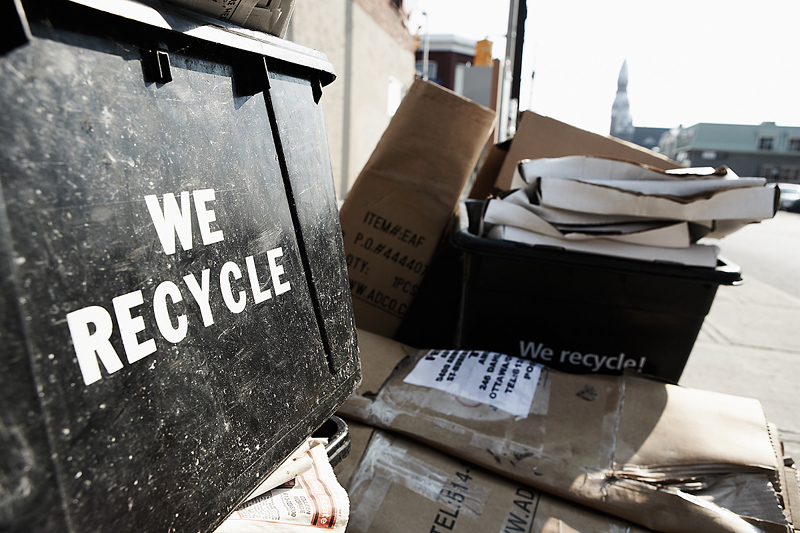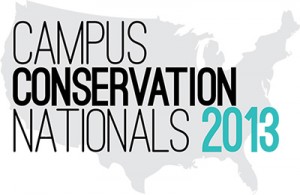Evan Johnson, Energy Corps member serving with Opportunity Link in Havre, writes about recycling in rural Montana.
My service so far has taught me an important lesson: Energy efficiency and sustainability are difficult and require incredible attention to detail.
There is no quick, easy fix for a high energy bill. Air leaks through cracks no one has ever seen, heat flows through wood and metal between insulated cavities, insulation sags, and solar heating works far too well in the summer—even on homes that don’t list it as a feature. Recycling is no different. Economies of scale make it easy in and around big cities, but recycling is only just starting to become economically viable in many rural areas. And many of us who grew up near cities recycling our papers, cans, and bottles are unaware of the many details that allowed us to do that. Most of us never stopped to think about why the recycling bins at school were a certain size. We put paper in them and that was that. Glass bottles went into a bin marked “glass” and that was the last we saw or heard of them.

If you are trying to improve energy efficiency or recycling, you have to be able to find the air leaks, know how to size recycling bins to accommodate the volume of waste produced without violating fire codes, figure out how to use those broken glass bottles from the bin, and much, much more. The newer energy efficiency and recycling are to an area, the more important those details are. In Havre, the 8th-largest city in Montana, recycling is a recent development facilitated by Energy Corps members and the non-profit Recycle Hi-Line. Because recycling is so new here, curbside pick-up is a long-term goal that won’t be realized until Havre sees a large increase in recycling rates. For now, we have to figure out the details of recycling on a case-by-case basis.
The District IV HRDC building (where my host organization has its offices) has arranged for a third party to take its recyclables to Pacific Steel and Recycling. Recycle Hi-Line partners with local businesses for a monthly recycle drive in a downtown parking lot. Some people sell their aluminum cans as scrap metal, while others donate them to non-profits that sell them to raise a few dollars. Commercially-sold recycling bins are rare. Most people and organizations here in Havre prefer either to improvise or build custom bins to keep costs down and to suit their means for transporting all that plastic, paper, and cardboard. In Havre, feed bags full of plastic and hand-built wooden bins keep recyclable materials out of the landfill and add a little character and charm to the city’s waste management infrastructure.
In some ways, getting involved in recycling in Havre has made me far more appreciative of the single-stream system my college had than I ever thought I could be. But on the other hand, putting cardboard in the old blue van out back then tossing a bag full of plastic into a bin whose maker works just down the hall makes me feel just a little bit more connected to the community. That’s one great advantage Havre’s fledgling recycling system has over a large, developed system—after all, recycling isn’t something most of us do for personal gain.
 Evan Johnson is assisting Opportunity Link with environmental education and outreach programs to promote sustainable practices in North-Central Montana. A recent graduate of Carleton College with a BA in Geology, Evan thoroughly enjoys outdoor recreation, particularly running and rock climbing. He attended the Indiana University Geological Field Camp near Cardwell, MT and participated in several volunteer trips with Habitat for Humanity, helping build homes in places ranging from Hawaii to Kyrgyzstan.
Evan Johnson is assisting Opportunity Link with environmental education and outreach programs to promote sustainable practices in North-Central Montana. A recent graduate of Carleton College with a BA in Geology, Evan thoroughly enjoys outdoor recreation, particularly running and rock climbing. He attended the Indiana University Geological Field Camp near Cardwell, MT and participated in several volunteer trips with Habitat for Humanity, helping build homes in places ranging from Hawaii to Kyrgyzstan.








